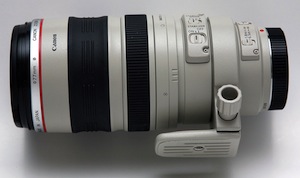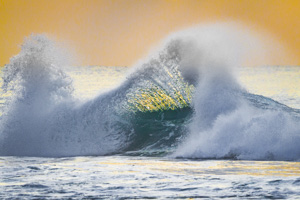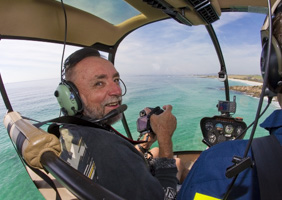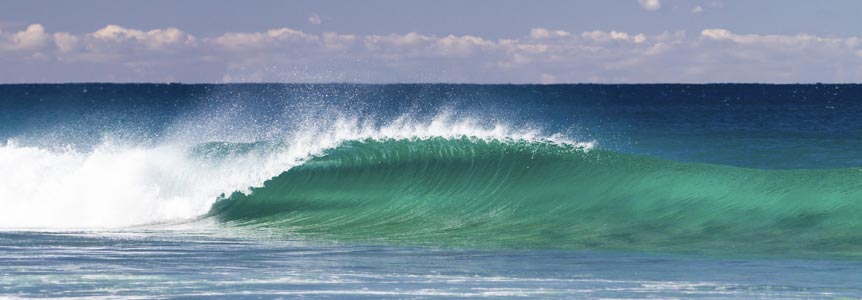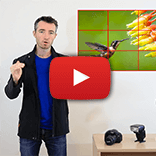7) Wait for an 'offshore' breeze.
Getting the right 'shape' of wave is just as important for surfers as it is for surf photographers. Wave shape totally changes how the image looks. Of course each wave is entirely unique (which is why surf photography can be so addictive) but generally speaking the most idyllic waves are seen when the breeze is 'offshore' - meaning that the breeze is coming from the beach and blowing out to the ocean. When the breeze is offshore like this, it holds up the waves just a little, giving them a smooth 'glassy' front and, as they break, the spray is blown back over the top, forming wonderfully aesthetic misty tails as the wave rears and crashes. These conditions also help the waves spill across sideways as they break, often forming tubes of water.
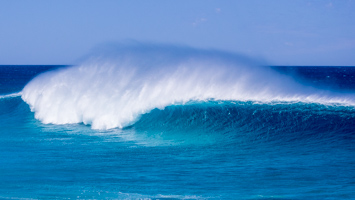 |
Stunning! While offshore breezes can occur at anytime, they are generally most common in the morning and usually stay around for a couple of hours after sunrise before switching direction later in the day when the 'sea-breeze' kicks in - another great reason to get up early. Of course the 'perfect' wave shape is somewhat personal preference and sometimes huge, messy, surging waves can make for really exciting images. Images of large swell tend to be dramatic and interesting, conveying the power of nature. It's often a good idea to have a quick look at the swell height on a website like
Willy Weather so you don't miss these great photo opportunities.

